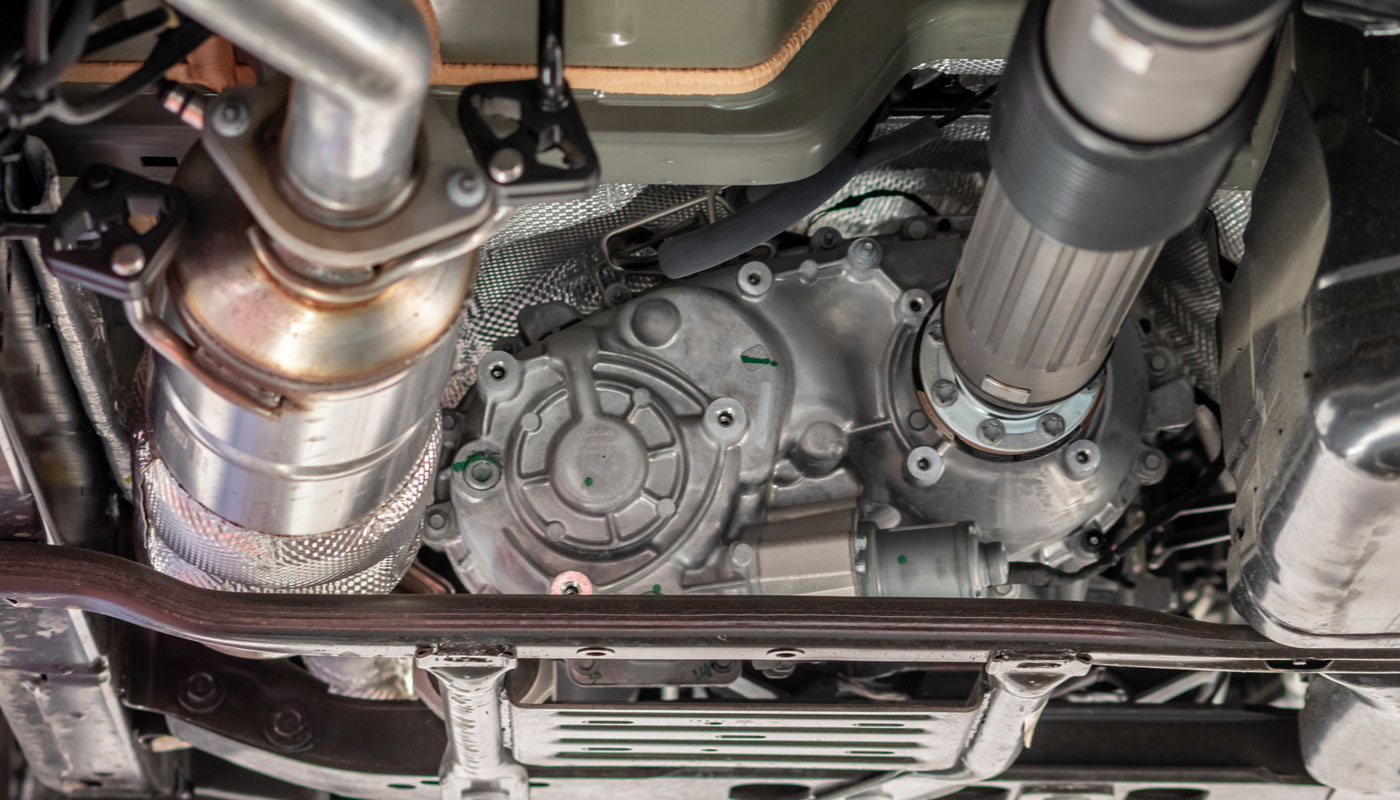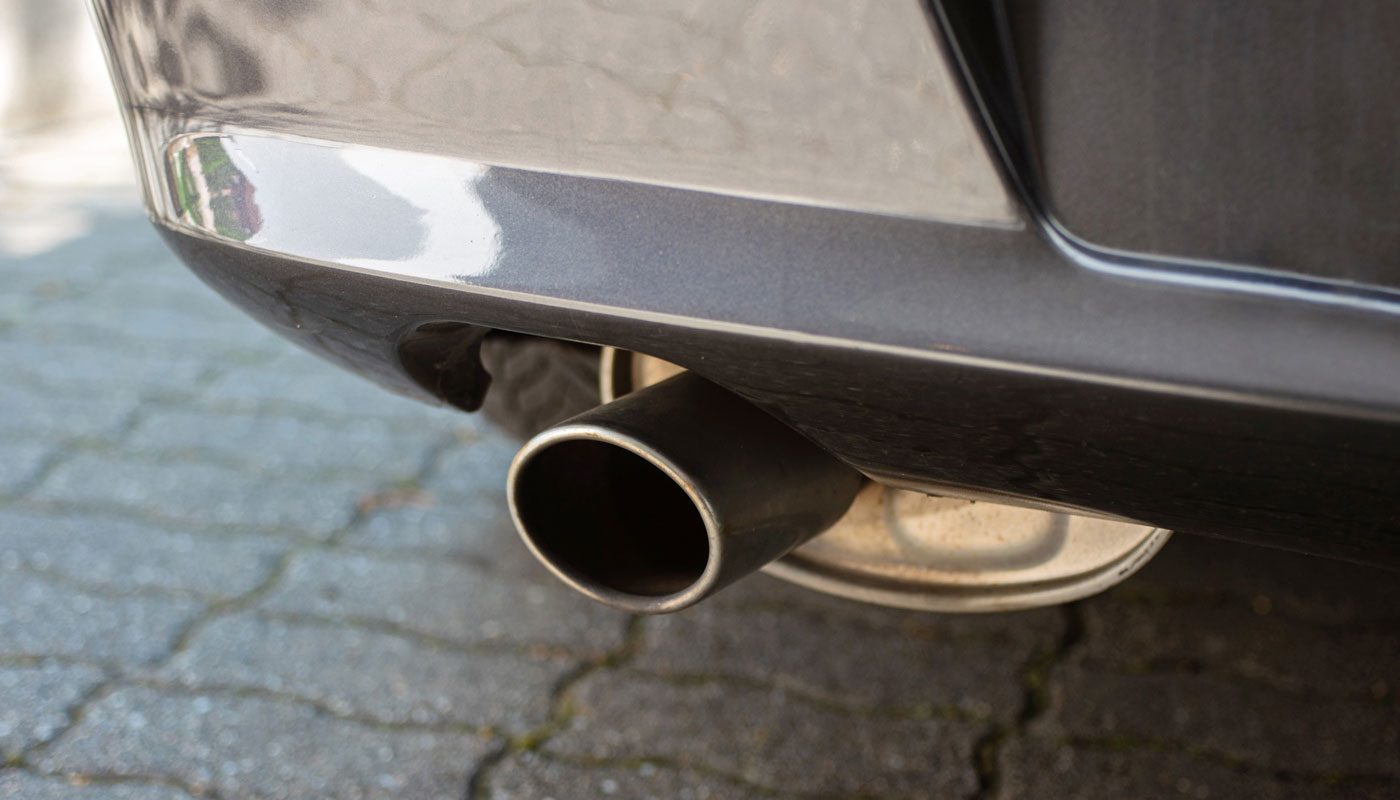What Does a Catalytic Converter Do?
Understand why this car part is important to your vehicle.
 Getty
Getty
Hidden beneath your car lies a modest but mighty device. The catalytic converter, known for reducing a vehicle's emissions, plays a crucial role in minimizing toxicity. Unfortunately, it has attracted thieves seeking to profit from its components.
Explore how this device boosts your car's performance and ways to prevent catalytic converter theft.
History of Catalytic Converters
Initially designed in France during the early automotive industry years, catalytic converters made their way to the U.S. through Eugene Houdry. Houdry, originally worried about smoke emissions from factory smokestacks, patented a catalytic converter for gas engine cars in the 1950s.
 Getty
Getty
What is the Primary Function of the Catalytic Converter?
Located under the car, between the muffler and engine, the catalytic converter converts pollutants like carbon monoxide into less harmful substances like nitrogen and water vapor. Special metals inside the converter trigger chemical reactions that transform the exhaust gases into less toxic forms, mainly hydrocarbons and carbon monoxide, which are then released from the muffler.
Catalytic converters are now standard in cars, gaining popularity in the mid-1970s when the US Environmental Protection Agency regulated vehicle emissions. That said, not all cars on the road in the United States have a catalytic converter. That's because federal law doesn't require one on cars made before 1974.
Three Different Types of Catalytic Converters
There are three types of catalytic converters in the U.S. Each type of catalytic converter helps cars pollute less, but they work differently and are used in different kinds of vehicles.
- Two-Way Converters: These are used in older cars. They work on two emissions: hydrocarbons (HC) and carbon monoxide (CO). The two-way converter works to turn these two gases into less harmful ones like carbon dioxide (CO2) and water (H2O).
- Three-Way Converters: Most newer cars have these. They're called "three-way" because they deal with three kinds of emissions: hydrocarbons (HC), carbon monoxide (CO), and nitrogen oxides (NOx). They break down the harmful gasses int less toxic ones, like CO2, H2O, nitrogen (N2), and oxygen (O2).
- Diesel Oxidation Catalysts (DOC): These are used in diesel vehicles. They mainly deal with hydrocarbons (HC) and carbon monoxide (CO). They help change these gases into CO2 and H2O. However, they're not as good at reducing nitrogen oxides (NOx) as three-way converters.
 Getty
Getty
Preventing Catalytic Converter Theft
Due to the valuable metals like palladium and platinum in catalytic converters, theft of these devices has surged. In 2022, 64,000 were stolen in the U.S. You'll notice almost immediately that your catalytic converter is gone when your muffler sounds like you're at the front of the Indy 500.
Replacing a catalytic converter can be pricey, up to $2,500 plus labor which is assuming that no additional damage occurred during the theft. This price tag leads some people to drive without one. Yet, it's illegal in many states due to emission standards. Without it, the car runs less efficiently, reducing fuel economy, creating louder noises when accelerating, and triggering engine warning lights.
Get tips that can help prevent catalytic converter theft.
Prevent TheftContact your local AAA office to see if they're holding a free catalytic converter labeling event. AAA qualified automotive technicians adhere a label to the catalytic converter. This label has a unique ID that is uploaded into a secure international tracking database that can be accessed by law enforcement and recyclers.
Preventative Maintenance to Keep Your Catalytic Converter Running
Here are a few tips for both preventative maintenance and to take care of your car’s catalytic converter.
- Get Your EGR Valve Checked: The EGR valve is an important part of your car's exhaust system. It sends some exhaust back into the engine to make sure all the fuel gets burned. This helps your car use fuel better and keeps the engine cooler. If the EGR valve doesn't function properly, it can make your engine too hot and damage the catalytic converter. Things like clogs or leaks can damage the EGR valve.
- Avoid Silicone Sealants on Your Exhaust: Mechanics often use sealants to make sure parts fit together tightly. Silicone sealants are popular, but they can't handle the high heat of the exhaust system. When they burn, they leave a coating on the oxygen sensor, which can mess up how the engine controls fuel. Too much fuel can make the exhaust too hot and hurt the catalytic converter. Use sealants made for high temperatures instead.
- Keep an Eye on Your Exhaust: If your car's exhaust appears a bluish color, it could mean oil is getting into the exhaust system. If oil gets into the exhaust, it can clog the holes in the catalytic converter, making it less efficient and more likely to get damaged. This usually happens because of problems inside the engine, like damaged pistons or valve seals. If you see blue smoke in your exhaust, get it checked by a professional right away.
Scheduling regular preventive maintenance for your car is a wise move whether to check on your catalytic converter or other major auto parts and functions. Rather than ignoring minor issues until they become significant problems, it’s wiser to schedule regular preventive maintenance to keep your car performing at its best.
To ensure the health of your vehicle and the safety of your catalytic converter, visit a AAA Car Care Center or a AAA-Approved Auto Repair Shop to schedule a maintenance appointment today.